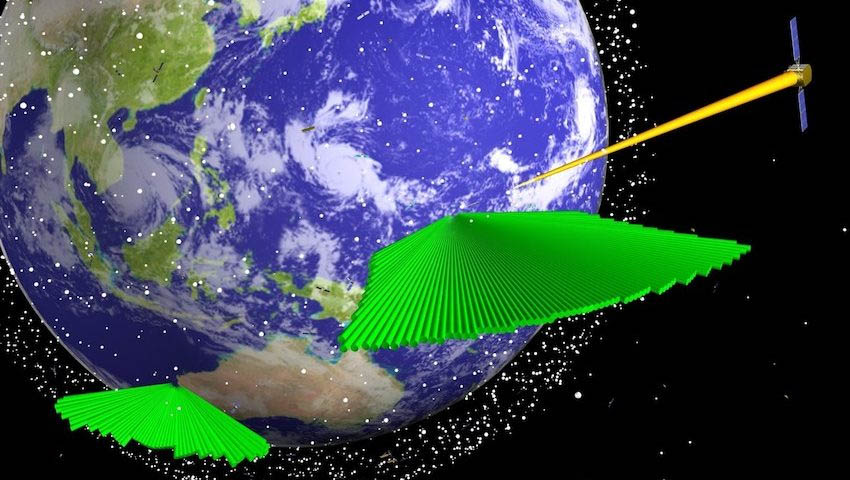
The USAF said this would play a critical role in providing a tactical advantage to the nation's warfighters in the space domain.
“Space Fence will use its flexibility, coverage and sensitivity to detect and accurately track significantly more objects than the current-day catalogue,” it said.
“This crucial capability is now one step closer to providing unprecedented space situational awareness, with the system completing its developmental and operational testing phases and has entered a trial period – one of the last steps before achieving operational acceptance.”
The Space Fence is designed to detect new and unusual activity in orbit.
That includes multiple objects which in orbit that do not correlate to objects in the Space Surveillance Network catalogue.
When new objects are detected, it issues alerts and begins tracking them to determine their orbits, he added
This has already begun to prove its capabilities. During testing of the system in March, it detected the debris field from an anti-satellite test conducted by India, observing a significant number of debris tracks at the time of the event.
It was able to automatically predict and correlate their next crossing times.
Beyond cataloguing particular objects in space, Space Fence will detect closely-spaced objects, breakups, manoeuvres, launches and conjunction assessments from low-Earth orbit through to geostationary orbit.
Collisions and deterioration of assets, such as defunct satellites and rocket boosters, have increased the amount of space debris, raising the risk of future collisions.
According to NASA's most recent Orbital Debris Quarterly News, there’s about 8 million kilograms of objects in Earth orbit. That number will grow as more commercial space projects launch massive constellations containing thousands of small satellites.
“That’s where the US Air Force’s Space Fence will play a crucial role,” the USAF said.
“The radar system will also play a crucial role in the everyday lives of Americans who are becoming more dependent on space-based technologies for everything from weather forecasting, banking, global communications to GPS navigation.
“Today, these critical services are being threatened by hundreds of thousands of objects and space debris orbiting the Earth.”
Rob Smith, vice-president of Lockheed Martin’s radar and sensor systems division, said Space Fence would revolutionise tracking and classification of objects that threatened manned and unmanned military and commercial space assets.
He said the USAF now tracked about 25,000 objects.
“When Space Fence comes online, the catalogue will experience significant growth and when fully operational, Space Fence will be the world’s largest and most advanced radar system, providing unprecedented space situational awareness,” Smith said.
Australia could host another Space Fence, possibly in Western Australia, to substantially increase the system’s space situational awareness capability.
Lockheed Martin has completed surveying a possible location for a second Space Fence. However, it hasn’t yet been funded in the USAF budget.
Receive the latest developments and updates on Australia’s space industry direct to your inbox. Subscribe today to Space Connect here.









